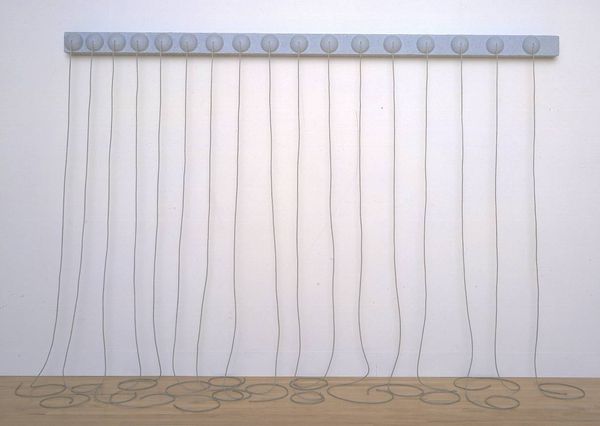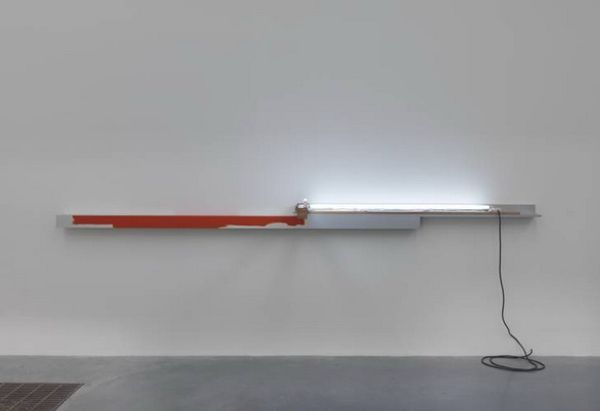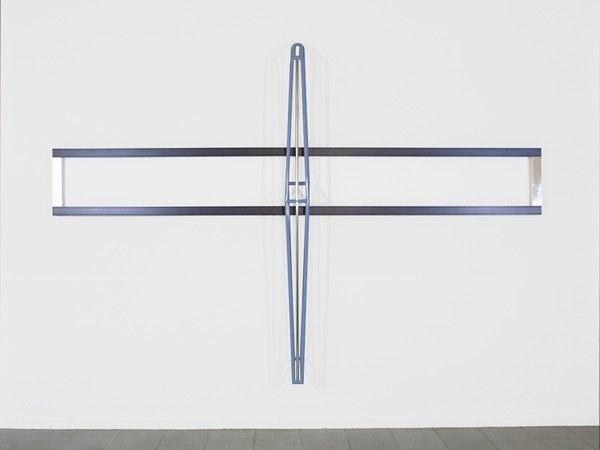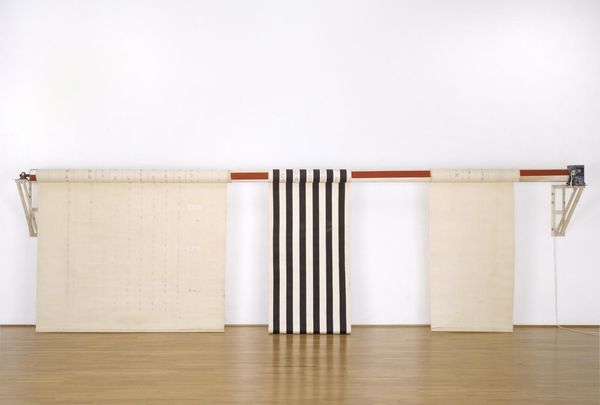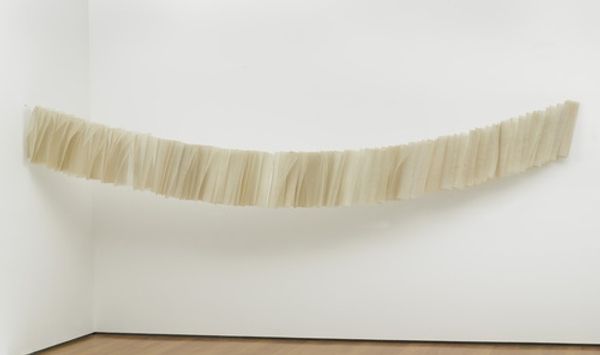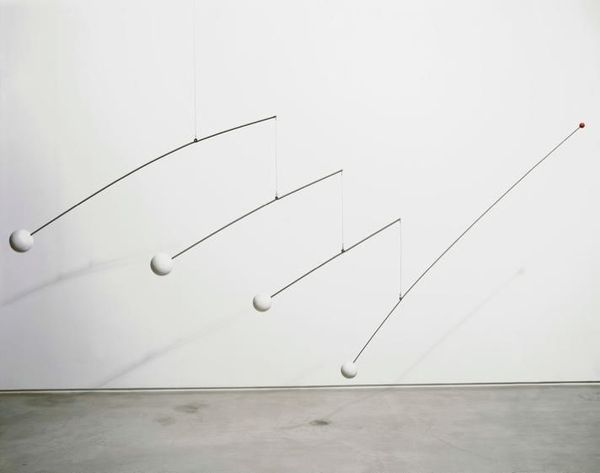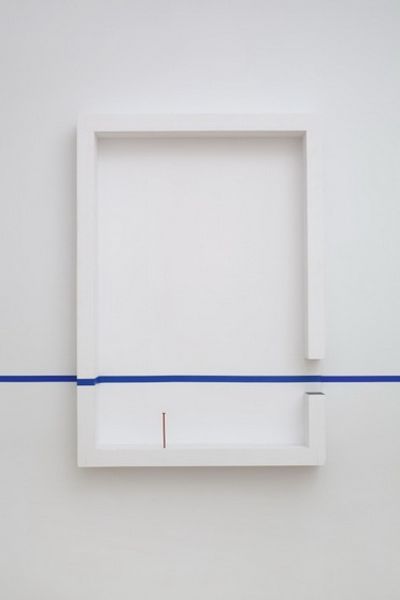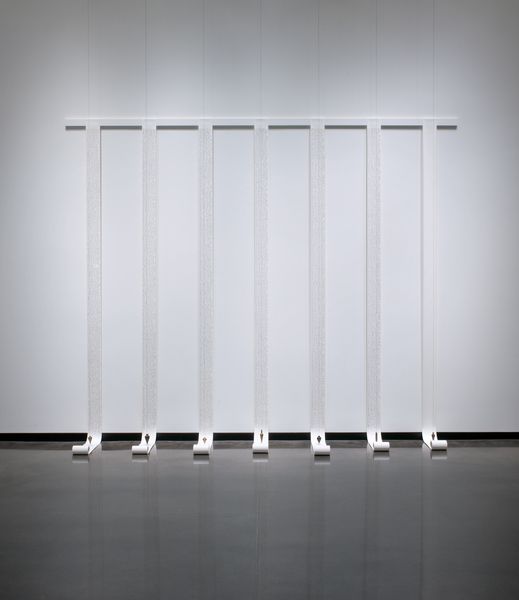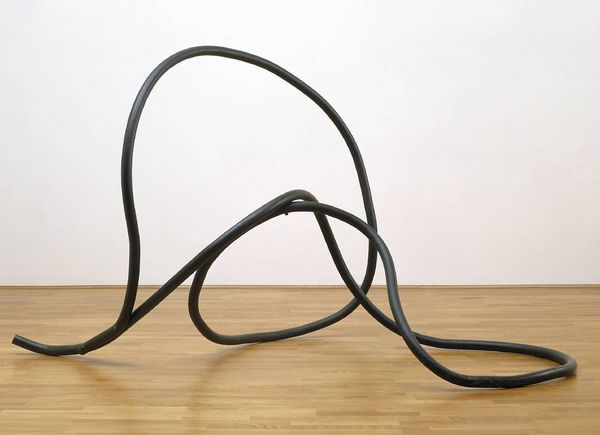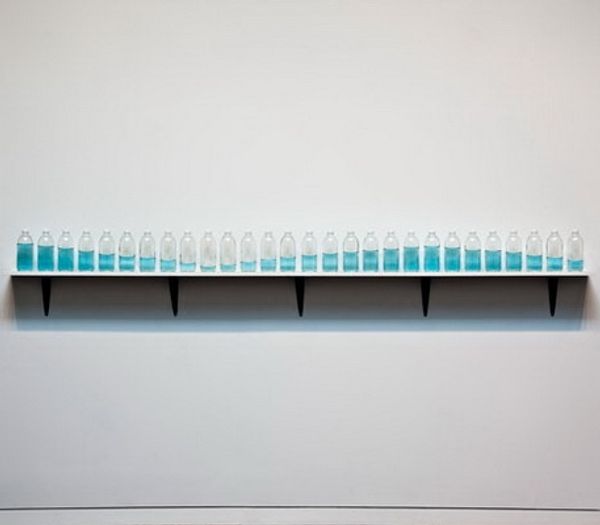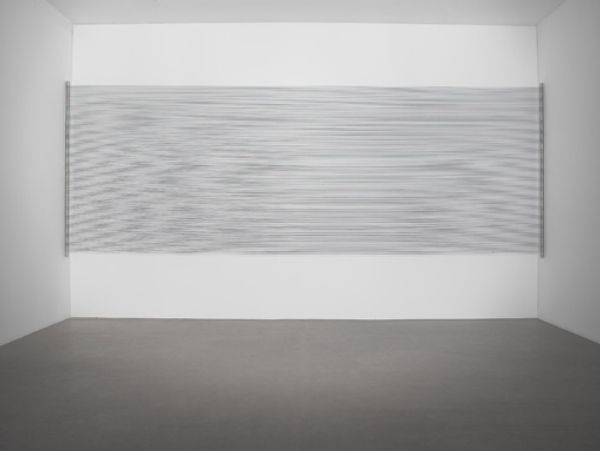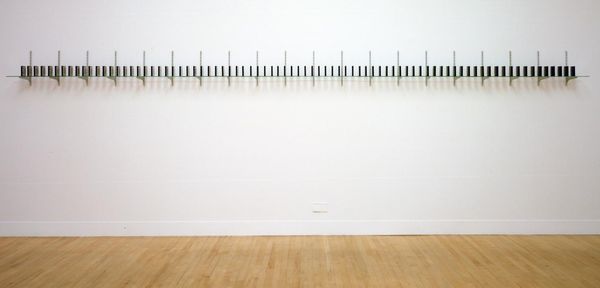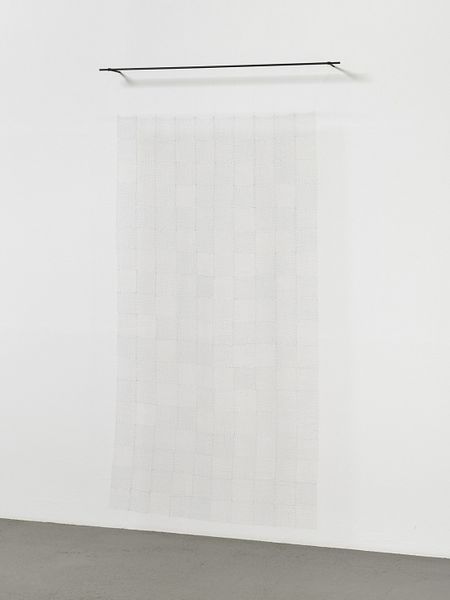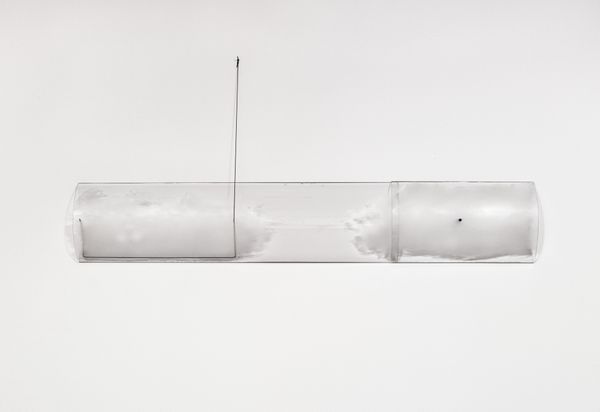
Dimensions: object: 124 x 3029 x 206 mm
Copyright: © The estate of Eva Hesse, courtesy Hauser & Wirth, Zürich | CC-BY-NC-ND 4.0 DEED, Photo: Tate
Editor: This is Eva Hesse’s "Addendum" from the Tate collection. It's so minimal, just a bar with dangling cords ending in rings. What is your perspective on its historical context? Curator: Hesse emerged in a period of shifting artistic values, challenging the rigid formalism of the early 60s. How do you think the piece reflects the changing role of women in art and society at that time? Editor: It feels very personal and raw, like an expression of vulnerability. Curator: Precisely. Hesse’s materials, often industrial yet fragile, speak to the tension between mass production and individual experience. Consider also the institutional critique inherent in displaying such a transient work. Editor: That's a perspective I hadn't considered, very interesting! Curator: Thinking about art's role in reflecting societal shifts truly enriches our understanding.
Comments
Join the conversation
Join millions of artists and users on Artera today and experience the ultimate creative platform.
tate 6 months ago
⋮
The hemispheres along the bar of Eva Hesse’s Addendum are positioned at increasing intervals determined by a fixed mathematical series. Many artists used serial systems at this time because they provided a way of composing sculptures without recourse to personal expression. Hesse hung rope cords from each hemisphere which fall to the ground in unpredictable curls. The regulated structure of the bar contrasts with the disordered appearance of the cords. But Hesse recognised that such systems were hardly rational, commenting that ‘Serial art is another way of repeating absurdity’. Gallery label, October 2016
